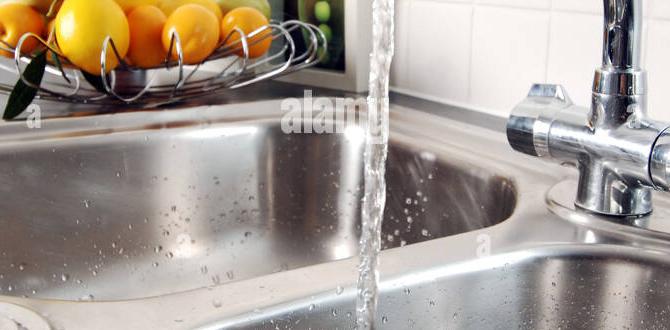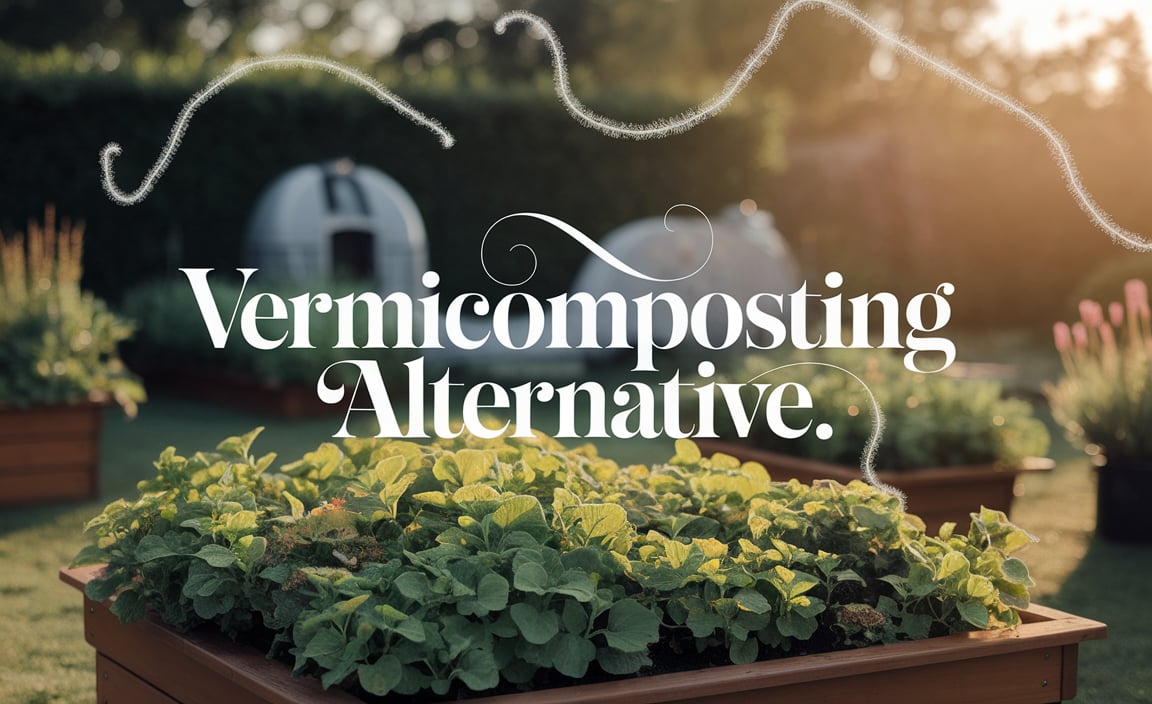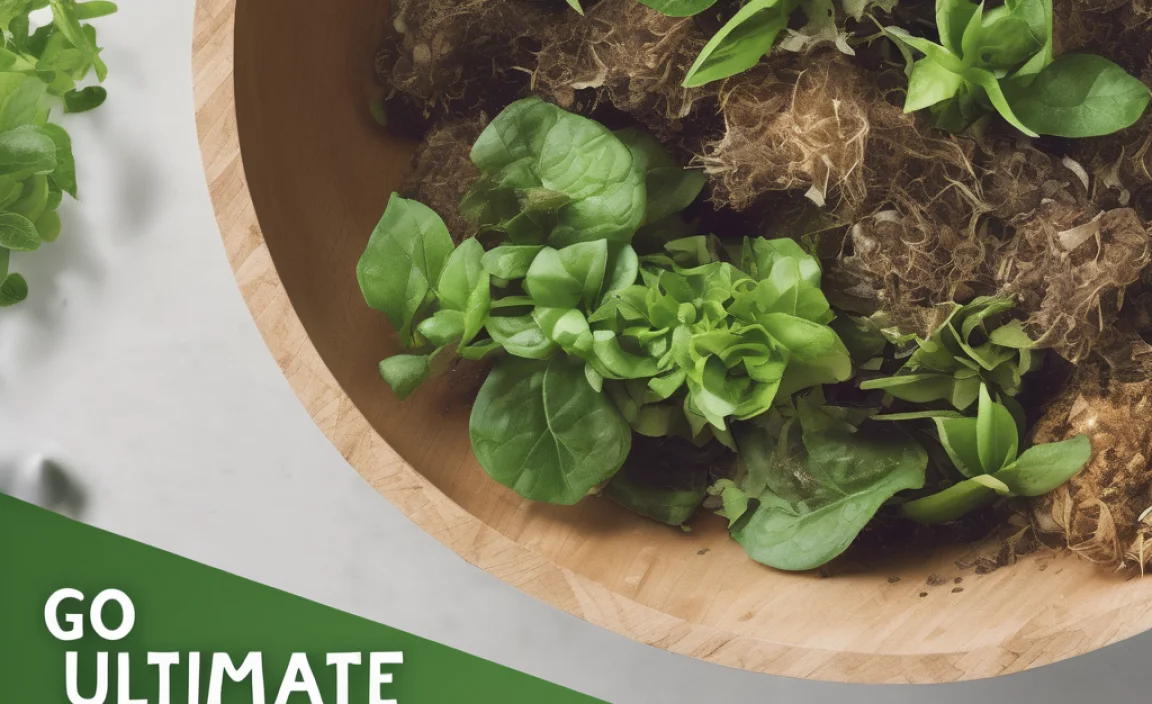Ever looked at your kitchen scraps and thought, “There’s gotta be a better way than the bin?” You’re not alone! Many of us want to be kinder to the planet but feel like the options are complicated. Well, I’ve got a super simple, eco-friendly solution for you right here in South Africa. It’s called vermicomposting, and it’s basically using friendly worms to turn your food waste into amazing plant food. No fancy equipment needed, and it’s surprisingly easy. Stick around, and I’ll show you exactly how to get started!
Vermicomposting in South Africa: Proven Eco-Tips for Beginners
Hey everyone, Troy D Harn here from TopChooser! Today, we’re diving into something really special: vermicomposting. If you’re in South Africa and want to reduce waste while boosting your garden’s health, you’ve landed in the right spot. Forget complicated composting systems; vermicomposting is all about letting a few happy worms do the hard work for you. It’s a brilliant way to createnutrient-rich fertilizer, often called worm castings or vermicast, right from your kitchen. We’ll cover everything from picking the right worms to setting up your very own worm farm, South African style. No stress, no jargon – just practical, proven eco-tips to get you composting like a pro!
Why Vermicomposting is a Worm-derful Idea for South Africans
So, why should you consider vermicomposting, especially here in Mzansi? For starters, it’s an incredibly effective way to deal with organic waste that would otherwise end up in landfills. Think about all those banana peels, coffee grounds, and veggie scraps – they can become a valuable resource instead of a burden. Plus, the end product, worm castings, is like a superfood for your plants. It improves soil structure, water retention, and provides essential nutrients, leading to healthier, happier plants. It’s a win-win: less waste and a thriving garden!
Here are some of the top reasons to embrace vermicomposting in South Africa:
- Waste Reduction: Significantly cuts down the amount of food waste sent to landfills, which is a big plus for our environment.
- Super Soil Amendment: Produces high-quality worm castings, which are far more potent and beneficial than traditional compost.
- Gardening Boost: Enhances soil health, leading to better plant growth, increased yields, and more vibrant blooms.
- Easy & Clean: Worm bins are relatively odour-free when managed correctly and can be set up in small spaces, making them ideal for both homes and apartments.
- Great Educational Tool: It’s a fantastic way to teach kids (and adults!) about decomposition, nutrient cycles, and sustainability.
- Local Relevance: Many earthworm species thrive in our South African climate with minimal fuss.
Getting Started: Your Beginner’s Guide to Worm Farming
Ready to get your hands (or rather, your worms’ heads) dirty? Setting up a vermicomposting system is simpler than you might think. We’ll break it down into easy steps.
Step 1: Choose Your Worm Bin
Your worm bin is your worms’ home. You don’t need anything fancy. You can buy a ready-made worm farm, which is super convenient, or you can DIY one. For beginners, a ready-made bin often has built-in drainage and ventilation, making life easier.
If you’re keen on a DIY approach, you can use:
- Plastic Tubs: Two identical opaque plastic tubs (around 40-60 litres) work well. One will hold the worms and bedding, the other will catch any excess liquid (leachate).
- Wooden Boxes: These can also be adapted, but ensure the wood is untreated and the bin is well-ventilated.
Key Features for a Good Worm Bin:
- Opaque: Worms dislike light. Opaque bins protect them from the sun and keep them happy.
- Ventilation: Worms need air! Drill small holes in the lid and sides of the bin for airflow.
- Drainage: This is crucial! Excess moisture can lead to anaerobic conditions (lack of oxygen), which worms hate and can cause bad smells. The second tub catching liquid is perfect for this.
- Size: Start with a bin that’s not too big. A 40-60 litre tub is a good starting point for a household’s kitchen scraps.
Step 2: Selecting Your Worms
Not just any earthworm will do! Garden worms are too big and prefer living deep in the soil. For vermicomposting, you need specific types of “composting worms” that are surface dwellers and voracious eaters. In South Africa, the most common and highly recommended species are:
- Red Wigglers (Eisenia fetida): These are the superstars of vermicomposting. They reproduce quickly, eat a lot, and are very tolerant of different conditions.
- European Nightcrawlers (Eisenia hortensis): Also known as Dendrobaena. They are a bit larger than red wigglers and can also be excellent composters.
You can buy composting worms from local suppliers, online stores specializing in vermicomposting, or sometimes from fellow worm farmers. Aim for about 500g to 1kg of worms to start. Don’t worry if you don’t see them eat much at first; they need to settle into their new home.
Step 3: Preparing the Bedding
Before your worms arrive, you need to prepare their cozy bed. This bedding provides moisture, air, and initial food for the worms. A good bedding mix is usually made from absorbent, carbon-rich materials.
Here are some excellent bedding options commonly available in South Africa:
- Shredded Newspaper or Cardboard: Uncoated, plain newsprint or corrugated cardboard. Tear or shred it into thin strips.
- Coconut Coir (Coco Peat): A sustainable and readily available option in many gardening stores.
- Aged, Unfertilized Compost: Provides a good starting point and some microbial activity.
- Aged Manure: Well-rotted, aged manure (cow, horse, chicken) can be used, but ensure it’s properly aged to avoid burning the worms.
How to Prepare:
- Mix your chosen bedding materials. A good mix might be 50% shredded newspaper/cardboard and 50% coconut coir or aged compost.
- Moisten the bedding. The goal is a consistency like a wrung-out sponge – damp but not dripping wet. You should be able to squeeze a few drops of water out, but it shouldn’t stream.
- Fill your worm bin about halfway to two-thirds full with the moistened bedding. Loosen it up so there are air pockets.
Step 4: Adding Your Worms
Once your bin and bedding are ready, it’s time to introduce your new wriggly friends!
- Gently place the worms on top of the bedding.
- Leave the lid off for about 30 minutes to an hour. This gives them a chance to burrow down away from any light.
- Once they’ve burrowed, securely place the lid on the bin to keep them safe and prevent escapees.
Step 5: Feeding Your Worms
This is where the magic happens! Worms eat organic matter. Start by burying small amounts of food under the bedding. You don’t want to overfeed them, especially at the beginning. They’ll process it, and you can gradually increase the amount as they become established.
What to Feed Your Worms:
- Fruit and vegetable scraps (avoid citrus peels in large quantities initially as they are acidic)
- Coffee grounds and tea bags (remove staples/plastic string)
- Crushed eggshells (helps with grit and calcium)
- Cooked pasta and rice (in small amounts, avoid oily sauces)
- Bread and grains (in moderation)
What to Avoid Feeding Your Worms:
- Meat, fish, and dairy products (can attract pests and create odours)
- Oily or greasy foods
- Spicy foods
- Salty foods
- Citrus peels (in large amounts)
- Onion and garlic skins (in large amounts)
- Diseased plants
- Pet waste
Feeding Tips:
- Chop food scraps into smaller pieces. This helps them break down faster.
- Bury food scraps under the bedding to prevent fruit flies and odours.
- Rotate feeding spots within the bin. Don’t feed in the same place every time.
- Start with small amounts. Judge how much they eat before adding more. A good rule of thumb is that a healthy worm population can eat about half their weight in food per day.
Step 6: Managing Moisture and Aeration
Worm bins need the right balance of moisture and air.
- Moisture: The bedding should always feel like a wrung-out sponge. If it’s too dry, lightly mist it with water. If it’s too wet, add more dry bedding material to soak up excess moisture.
- Aeration: Gently turn or fluff the bedding occasionally (e.g., once a month) to ensure good air circulation. Be careful not to disturb the worms too much.
Step 7: Harvesting Your Worm Castings
This is the reward! After a few months, you’ll see a rich, dark, crumbly material building up at the bottom of your bin – these are your worm castings! Harvesting can be done in a few ways:
- Migration Method: Stop feeding one side of the bin for a couple of weeks. The food scraps will accumulate on the other side, and the worms will migrate to the side with food. You can then scoop out the castings from the “empty” side.
- Screening: Dump the contents of the bin onto a tarp. Gently separate the castings from any remaining bedding or uncomposted material. You can also use a sieve.
- The “Light” Method: Dump the bin’s contents onto a tarp under a light source. Worms hate light, so they will burrow to the bottom. You can then scrape off the top layers of castings, and repeat until you reach the worms, which you can then return to the bin.
Your harvested worm castings are ready to use! They are a fantastic soil enhancer for your garden beds, potted plants, and even your lawn.
What to Feed Your Worms: A Quick Reference Table
To make things crystal clear, here’s a handy table of what your composting worms love to eat and what to avoid.
| Good to Feed Worms | Things to Avoid Feeding Worms |
|---|---|
| Fruit scraps (apple cores, banana peels, melon rinds) | Meat, fish, bones |
| Vegetable peels and scraps (carrots, lettuce, potatoes) | Dairy products (milk, cheese, yogurt) |
| Coffee grounds and paper filters | Oily or greasy foods |
| Tea bags (remove staples and plastic tags) | Spicy foods (chilies) |
| Crushed eggshells (rinsed) | Salty foods |
| Cooked pasta and rice (plain, small amounts) | Citrus peels (in large quantities) |
| Bread and crackers (plain, small amounts) | Onion and garlic skins (in large quantities) |
| Leaves (non-diseased) | Diseased plants or roots |
| Shredded newspaper and cardboard (uncoated) | Pet waste (dog or cat faeces) |
Common Composting Worms in South Africa
As mentioned, not all worms are created equal when it comes to composting. Here’s a look at the stars of the show:
Red Wigglers (Eisenia fetida)
These are the most popular composting worms worldwide, and for good reason. They are prolific breeders, hardy, and excellent at breaking down organic matter efficiently. They thrive in the temperature range of 15-25°C, which is easily achievable in most South African homes.
Red California Worms
Often, “Red California Worms” is just another name for Red Wigglers (Eisenia fetida) or their close relatives. They are highly regarded for their composting abilities.
European Nightcrawlers (Eisenia hortensis)
These are a bit larger than red wigglers and can handle slightly cooler temperatures. They are also great composters and can sometimes be used for fishing too!
You can purchase these worms from various suppliers across South Africa. Look for reputable worm farms or gardening centres that cater to composting enthusiasts. A good starting point for sourcing worms and supplies in South Africa includes checking with local permaculture groups, gardening clubs, or searching online for “composting worms South Africa” or “vermicomposting supplies South Africa”.
Tips for Success in the South African Climate
South Africa boasts diverse climates, from the humid coastlines to the drier inland regions. Your worm farm’s success will partly depend on adapting to these conditions.
- Temperature Control:
- Hot Weather: Protect your bin from direct sunlight. Place it in a shaded spot, perhaps on a veranda or under a tree. You can also insulate the bin with a layer of burlap or a blanket on extremely hot days. Keep the bedding moist, as evaporation helps cool the bin.
- Cooler Weather: In winter or in cooler regions, ensure the bin is in a spot that receives some warmth, like a sunny windowsill (but avoid direct sun all day). You might need to add more bedding to insulate it. If it gets very cold, you can bring the bin indoors.
- Moisture Management:
- In drier inland areas, you’ll likely need to check moisture levels more frequently and mist the bedding when necessary.
- In humid coastal areas, be extra careful not to overwater. The bedding should always be damp, not soggy. Ensure good ventilation to prevent excess moisture buildup.
- Feeding Habits:
- Adjust feeding based on temperature and worm activity. Worms eat slower in cooler temperatures.
- Always bury food scraps well, especially in warmer weather, to deter flies and pests.
Troubleshooting Common Worm Farm Issues
Even with the best intentions, you might run into a few hiccups. Don’t worry; most worm farm problems are easy to fix!
1. Odour
Cause: Usually too much moisture, overfeeding, or feeding inappropriate items (like meat or dairy).
Solution: Add dry bedding material (newspaper, cardboard, coco coir) to absorb excess moisture. Reduce the amount of food you’re giving them. Make sure you’re only feeding them approved items. Check that the bin has adequate ventilation and drainage.
2. Fruit Flies or Pests
Cause: Exposed food scraps on the surface.
Solution: Always bury food scraps completely under the bedding. Ensure the lid is sealed properly. You can also try placing a layer of dry bedding or a piece of cardboard over the feeding area.
3. Worms Trying to Escape
Cause: The bin is too wet, too dry, the pH is off (often too acidic from too much citrus), or there’s not enough food.
Solution: Check and adjust moisture levels. Add a handful of crushed eggshells (rinsed and dried) to help buffer acidity. Ensure there’s always a food source available. Burying food well also discourages escape.
4. Slow Composting
Cause: Temperature is too cold or too hot, not enough worms, or the food scraps are too large.
Solution: Adjust the bin’s location for better temperature control. Ensure you have a healthy population of worms. Chop food scraps into smaller pieces for faster decomposition.
Using Your Worm Castings
Once you’ve harvested your beautiful worm castings, it’s time to put them to good use in your garden. They are incredibly versatile!
- Soil Amendment: Mix castings directly into your garden beds, potted plant soil, or vegetable patches at a rate of about 10-20%. This improves soil structure, aeration, and

I am passionate about home engineering. I specialize in designing, installing, and maintaining heating, ventilation, and air conditioning systems. My goal is to help people stay comfortable in their homes all year long.



